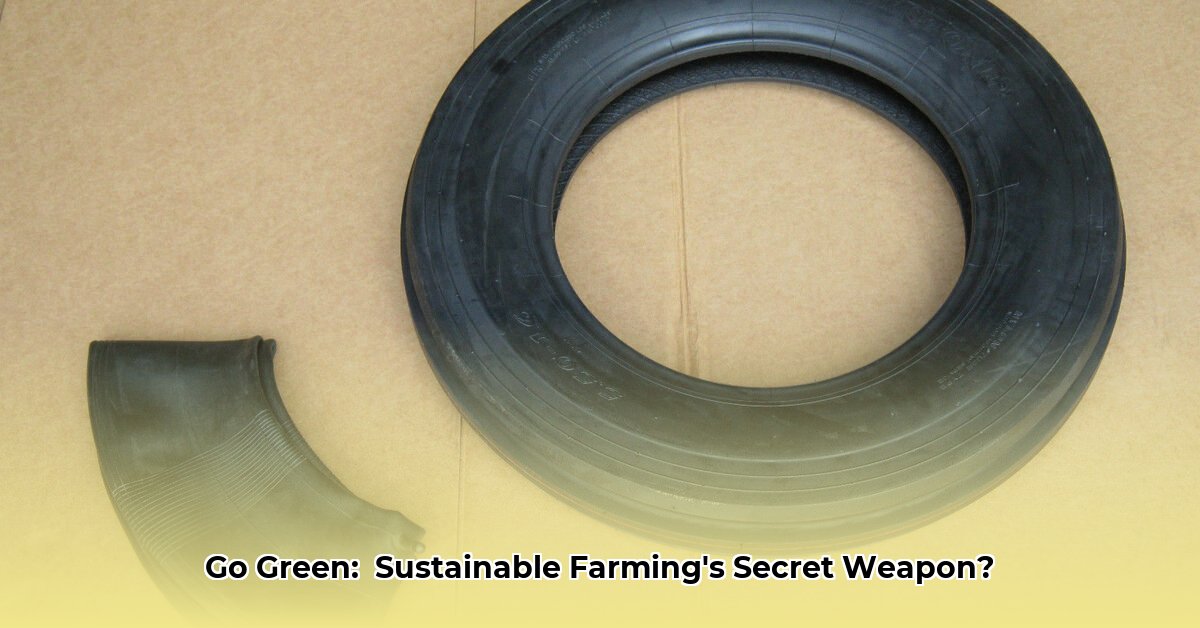
The seemingly insignificant 5.5-16 tractor tire plays a surprisingly crucial role in the sustainability of modern agriculture. This article examines the environmental impact of these tires throughout their lifecycle, from production to disposal, and provides actionable recommendations for a greener future. We will explore the market landscape, sustainability considerations, and future research needs, highlighting the importance of this seemingly small component in the larger context of sustainable farming practices. For more information on tractor tire selection, visit this helpful resource.
The 5.5-16 Tractor Tire Market: A Growing Demand for Sustainability
Demand for 5.5-16 tractor tires is robust, driven by the increasing focus on sustainable agriculture. Farmers prioritize tires that balance efficiency and durability, minimizing environmental impact. Carlisle, with its Farm Specialist 5.50-16 tire known for excellent soil flotation (crucial for preventing soil compaction), is a key market player. Online marketplaces like Amazon reflect consistent demand, indicating a healthy market. However, a complete market analysis is hindered by a lack of readily available data on manufacturing volumes and material composition. This data gap limits our understanding of the tires' overall environmental footprint.
Environmental Impacts: A Lifecycle Perspective
The environmental impact of a 5.5-16 tractor tire extends across its entire life cycle:
- Manufacturing: Energy consumption and resource use vary depending on manufacturing processes and materials. Lack of transparency regarding material composition complicates precise impact assessments.
- Use: Soil compaction is a significant concern, reducing yields and harming the environment. Tire design, inflation pressure, and operational practices all influence compaction levels. Fuel efficiency is another critical factor, as reduced fuel consumption directly translates to lower greenhouse gas emissions.
- Disposal: The end-of-life management of used tires presents disposal challenges. Recycling options are limited, leading to landfill accumulation.
This lack of comprehensive data makes evaluating the true environmental cost challenging, emphasizing the need for improved transparency and data collection.
Sustainability Strategies: A Collaborative Approach
To promote sustainable 5.5-16 tractor tires, a multi-stakeholder approach is essential:
Tire Manufacturers: Short-term actions include improved tire labeling (including detailed sustainability information) and pilot programs for sustainable production methods. Long-term goals should focus on research and development of bio-based rubber alternatives and the adoption of fully sustainable manufacturing processes. This includes exploring options like using recycled rubber or bio-based materials in tire production.
Farmers/Agriculturalists: Short-term actions include careful monitoring of fuel consumption and soil compaction along with making informed tire selections based on specific needs and soil conditions. Long-term goals should involve embracing precision farming techniques (minimizing field passes) and optimizing tire pressure for maximum efficiency and minimal soil compaction. Implementing improved farming techniques can reduce the number of times the tractor needs to cross the field, lessening soil compaction.
Governments/Regulators: Short-term actions should include funding research into recycling, exploration of tax incentives for sustainable tires, and establishing clear standards and regulations. Long-term goals should be establishing comprehensive regulations for agricultural tire sustainability and increased support for related research and industrial innovation. Government regulations and incentives can drive the market towards more environmentally friendly options.
Consumers: Short-term actions involve educating themselves about the life cycle of tires and supporting manufacturers prioritizing sustainability. Long-term commitment requires prioritizing tires with longer lifespans and recycled content, and actively supporting policies driving sustainable practices in agriculture. Consumer demand plays a significant role in driving the market towards sustainable options.
Future Research Needs: Filling the Knowledge Gaps
To enhance our understanding of the sustainability of 5.5-16 tractor tires, future research should focus on:
Comprehensive Life Cycle Assessments (LCAs): These studies are crucial for quantifying the environmental impact of these tires across their entire lifecycle. More granular data is needed to track each step, from raw material sourcing to end-of-life disposal.
Material Sourcing Transparency: Increased transparency from manufacturers regarding the materials used in tire production is vital for informed decision-making. Openly sharing the composition of the tires would allow for better comparison and assessment.
Comparative Analyses: Independent comparative analyses of different tire brands are needed to help farmers assess the trade-offs between longevity, fuel efficiency, and soil compaction. Standardized testing protocols are needed to ensure the comparability of results from different studies.
Conclusion: Small Tire, Big Impact
The 5.5-16 tractor tire, while seemingly small, serves as a microcosm of the broader sustainability challenges within agriculture. Addressing the environmental impacts of these tires will require a collaborative effort involving manufacturers, farmers, governments, and consumers. By prioritizing data-driven research, fostering transparency, and adopting sustainable practices, we can pave the way for a greener future in agriculture. The actionable recommendations provided in this article provide a strong foundation for moving toward sustainable practices across the entire sector.